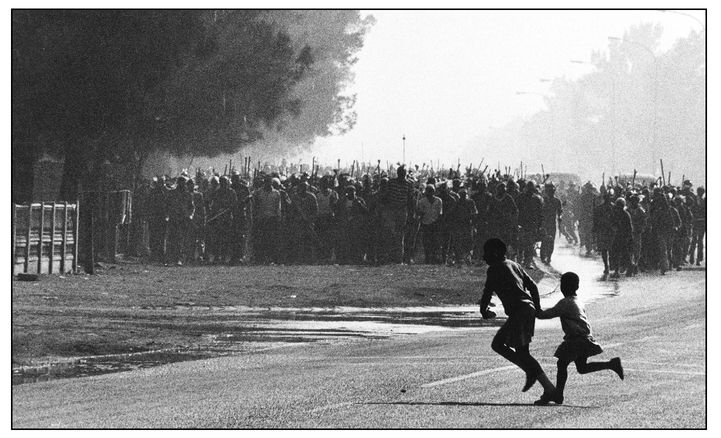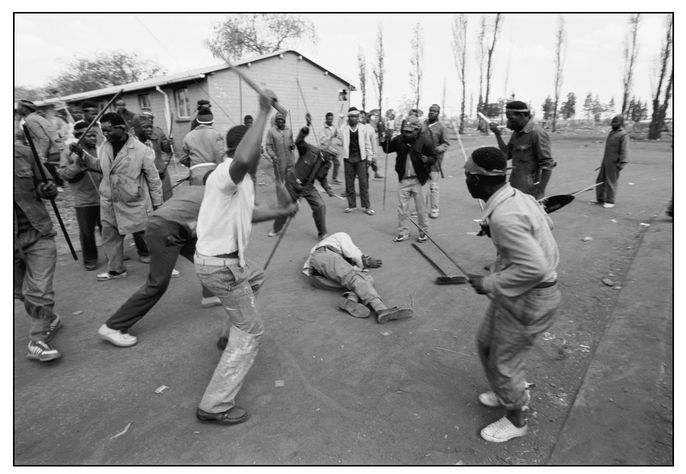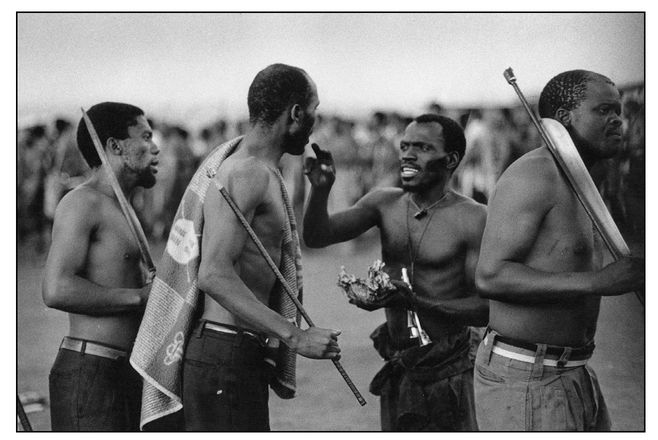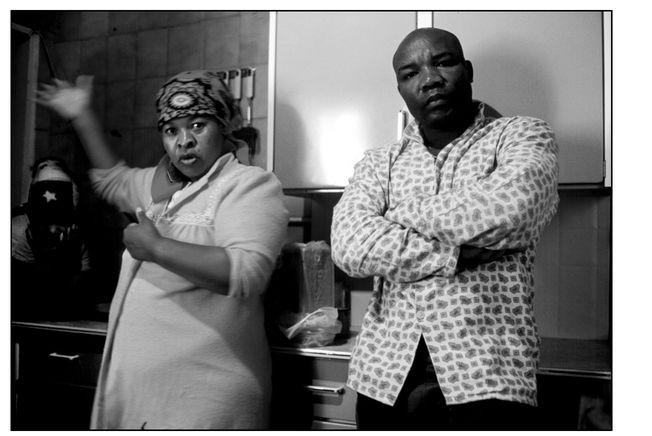The Bang-Bang Club (9 page)
Read The Bang-Bang Club Online
Authors: Greg Marinovich

On Joao’s birthday in 1992, he was in his darkroom cubicle processing film when Ken came in to see how the job had gone. After some time, grinning broadly, Ken handed him a large brown envelope. Joao opened it, expecting a card, but instead it was a black-and-white photograph of a train smash and written on the bottom of the picture was ‘Happy birthday Joao!!’ Joao wondered why Ken had given him that picture. ‘That’s what happened the day you were born!’ Ken explained. He had gone to the newspaper archives to see what had been on the front page on 9 August 1966, unearthed the original negative and made an 8’ by 10’ print. ‘A lot of people die?’ Joao asked. ‘Lots,’ replied Ken, who had been born on Valentine’s Day. ‘On my birthday, they had some girl with flowers; on yours there has to be a disaster!’
By 1992, Ken had turned
The Star
’s photo department around. That year Joao won the national Press Photographer’s award, Ken was runner-up and
The Star
photographers dominated all the categories. It was through Joao that I got to know Ken better. There were individual friendships between the four of us, as well as a growing common bond. Our girlfriends and wives became friends, and we would get together for meals and to discuss and edit the pictures when one of us had done a big story.
The Star
’s photo department around. That year Joao won the national Press Photographer’s award, Ken was runner-up and
The Star
photographers dominated all the categories. It was through Joao that I got to know Ken better. There were individual friendships between the four of us, as well as a growing common bond. Our girlfriends and wives became friends, and we would get together for meals and to discuss and edit the pictures when one of us had done a big story.
When there was a lot of violence, we would team up for ‘dawn patrols’ - waking before dawn to be in the townships by first light. It was a ritual that we had each done singly at first and then later two or three of us would sometimes cruise together. The companionship meant I did not feel so alone when the alarm jerked me awake to face
the next day of witnessing the violence. Sometimes when the days had been really bad I would wake seconds before the alarm and try to find excuses for staying in that warm bed, but the thought that the others were waiting somewhere would help me to get up.











the next day of witnessing the violence. Sometimes when the days had been really bad I would wake seconds before the alarm and try to find excuses for staying in that warm bed, but the thought that the others were waiting somewhere would help me to get up.


A girl leads her younger sister to safety as an impi, or regiment, of Inkatha-supporting Zulu warriors moves down Khumalo Street, Thokoza, at the start of the Hostel War, August 1990. Ken would later be killed in this same street, four years later. (Ken Oosterbroek /
The Star
)
The Star
)

Nancefield Hostel, Soweto, 17 August, 1990. A group of Inkatha-supporting Zulu hostel dwellers kill a man they suspect of being a Xhosa - understood by the attackers to be synonymous with the ANC. It turned out that he was an ethnic Pondo of undetermined political allegiance. (Greg Marinovich)

Khumalo Street, Thokoza, December 1990. A man laughs towards the camera as he passes a group of female Inkatha supporters beating an unidentified woman. The severely injured woman was later picked up by police, but it is not known if she survived. (Joao Silva)

ANC-supporting Xhosa warriors receive magic potion or
intelezi
from a
sangoma
at ‘the mountain’ in Bekkersdal township, west of Johannesburg, 1993. (Kevin Carter/Corbis Sygma)
intelezi
from a
sangoma
at ‘the mountain’ in Bekkersdal township, west of Johannesburg, 1993. (Kevin Carter/Corbis Sygma)

Inhlazane, Soweto, 15 September, 1990. An ANC supporter prepares to plunge a knife into Lindsaye Tshabalala, a suspected Inkatha supporter, during clashes at the start of the Hostel War. (Greg Marinovich)

Inhlazane, Soweto, 15 September, 1990. An ANC supporter hacks at a burning Lindsaye Tshabalala as a young boy flees. This was one of a series of pictures that won the Pulitzer Prize for Spot News in 1990. (Greg Marinovich)

Maki and Sandy ‘Tarzan’ Rapoo explain how their nephew, Johannes, was shot dead by police in their Meadowlands Zone 1 suburb of Soweto, June 1992. They were in the kitchen of the house on Bakwena Street, where they had previously suffered the loss of Sandy’s younger brother, Stanley. (Greg Marinovich)

Maki Rapoo leads her brother-in-law, Lucas, out into the yard of the family home on Bakwena Street to do a traditional dance during his wedding reception in 1996. (Greg Marinovich)

The maternal aunt of Aaron Mathope grieves next to the nine-month-old infant’s corpse after he was hacked to death by Inkatha attackers, aided by police, in Boipatong Township, 18 June, 1992. 45 people were killed. One of the Inkatha attackers’ leaders later explained the killing of Aaron thus: ‘You must remember that a snake gives birth to a snake.’ (Greg Marinovich)

Policemen open fire on an unarmed crowd of Boipatong residents who had wanted access to a man shot dead earlier by police after President FW de Klerk was chased from the township on 20 June, 1992, days after the massacre. There were several deaths and injuries. Police and the government denied this incident occurred, saying residents and journalists had fabricated the casualties. (Greg Marinovich)
Other books
Manhattan Lullaby by Olivia De Grove
Chickadee by Louise Erdrich
Coming of Age: Volume 1: Eternal Life by Thomas T. Thomas
Of Ashes and Rivers that Run to the Sea by Marie Munkara
The Other Side of Heaven by Jacqueline Druga
Biding His Thyme: 4 by Shelley Munro
Secret Santa 4U by Scott, Paisley
Snowy Mountain Nights by Lindsay Evans
taboo3 takingthejob by Cheyenne McCray
All The Way by Charles Williams